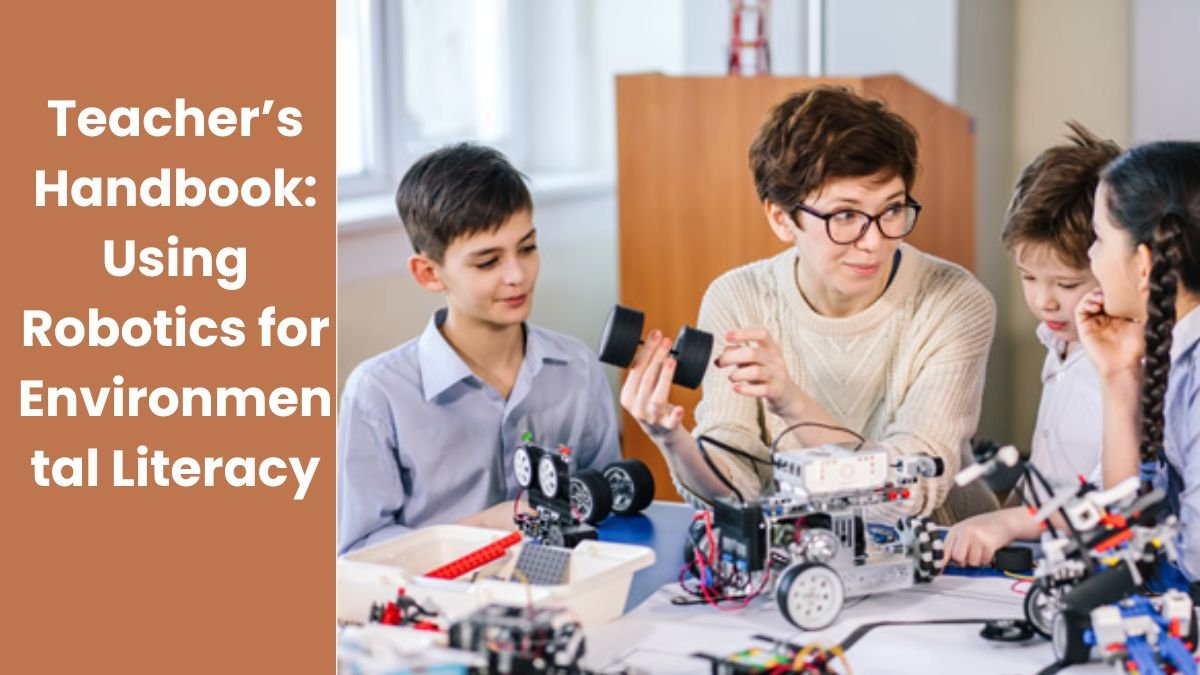Teacher’s Guide: In this technological era of the 21st century, education is no longer limited to textbooks. Now the emphasis is on experimentation, innovation and solving real-life problems in the classroom. In this sequence, a new and interesting method has emerged—the use of robotics for environmental literacy. This subject not only develops technical understanding in children, but also makes them sensitive towards the environment. This article is a guide for teachers on how they can explain the importance of environment to students through robotics in the classroom.
What is the significance of environmental literacy?
In times, when we are facing severe problems of climatic changes, pollution, de-forestations, extinction of biodiversity, every single citizen should be environmentally conscious and responsible. This task is not merely of adults but even children- (as they are the future of tomorrow)
Environmental literacy means understanding nature, identifying its crises and active participation to solve them.
Combining Robotics and Education
Robotics is a subject that gives students practical knowledge of hardware, software and programming. When it is linked to environmental problems, children develop real problem solving abilities.
For example:
- A student can build a garbage sorting robot that can put wet and dry waste in separate bins.
- A group can build a robot that irrigates the school garden on time, preventing wastage of water.
- Sensor-based robots can measure air quality and give information about pollution levels.
How to get started as a teacher? Step-by-step guide
Give basic training Initially, introduce children to the basics of robotics such as:
- What is a sensor?
- How does a motor work?
- What are the basics of programming?
Instead of scaring children, explain to them that it is like a game, in which one has to make and try things.
Discuss environmental problems Have an open discussion in the class about:
- What environmental problems do they see?
- What are they worried about?
Projects related to children’s own problems motivate them more.
Form groups for robotic projects Promote project-based learning by dividing children into groups. Each group can be given a problem such as:
- How to prevent littering in the school premises?
- How to store rainwater?
- How do plants get enough light and water?
Children have to think of solutions to each problem through robotics.
Experiment and present
Encourage children to make prototypes. For this, Arduino, LEGO Robotics or other DIY kits can be used. Once the prototype is made:
- Give them an opportunity to give a presentation in the class.
- Let them share their experience—what was the challenge, how did they solve it?
Connect local problems with global thinking
Try to explain to children how the technologies they have created can be useful on a large scale in the future. This increases their confidence and they start seeing themselves as a change-maker.
Understand by example: A school project
In DIET Kottayam, a project was made by Class VIII students and they designed a so called robotic dustbin. This dustbin can open automatically once it passes in front of it and recognizes the garbage with the use of the sensors and sorts it in various categories. This project did not only make children have a sense about technology but also educated them about the need to be clean and recycle.
Advantages of education
- Technical skills: Children learn hardware, circuiting, coding and designing.
- Problem solving ability: Children recognize environmental problems and think of their practical solutions.
- Teamwork and Leadership: Group assignments build the sense of cooperation, leadership and communication.
- Environmental Responsibility: Nature brings awareness to children learning to see themselves as defenders of nature.
Role of the Teacher
A teacher’s job is not only to guide but also to inspire. You should let children’s curiosity fly, consider their mistakes as opportunities and give them freedom to think. For robotics, the teacher does not have to be an engineer, he should just have the spirit to experiment with children.
Further Possibilities
This can be a basic experience for children which can later lead them to fields like:
- engineering,
- environmental science,
- data analysis,
- and green technology.
Besides, there are many robotics competitions at national and international level like:
- FLL (First Lego League)
- World Robotics Olympiad
- Google Science Fair
- where children can present their projects.
Conclusion
The model of environmental literacy + robotics is an effective trend in contemporary educating. Besides the fact that it renders the students responsible citizens, it also teaches students to strike a balance between innovation, technology and nature.
When you, as a teacher enroll into this quest, you will not be merely conducting a lesson, but you will be producing future environmental warriors – those who think, create and make a difference.
